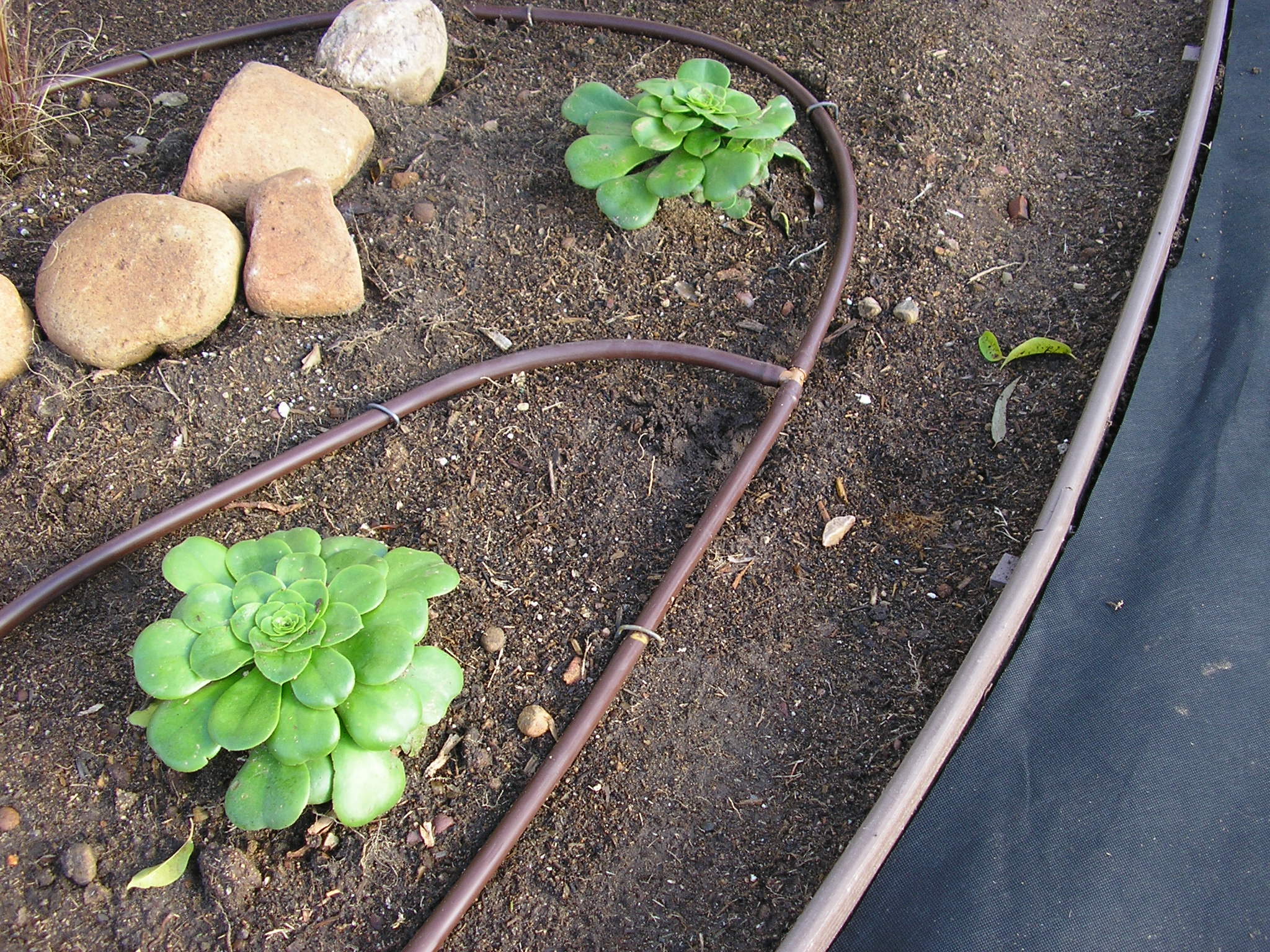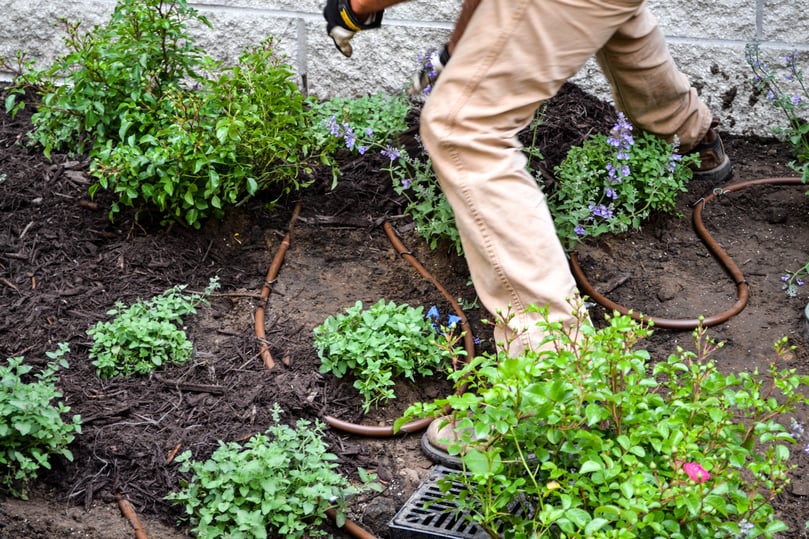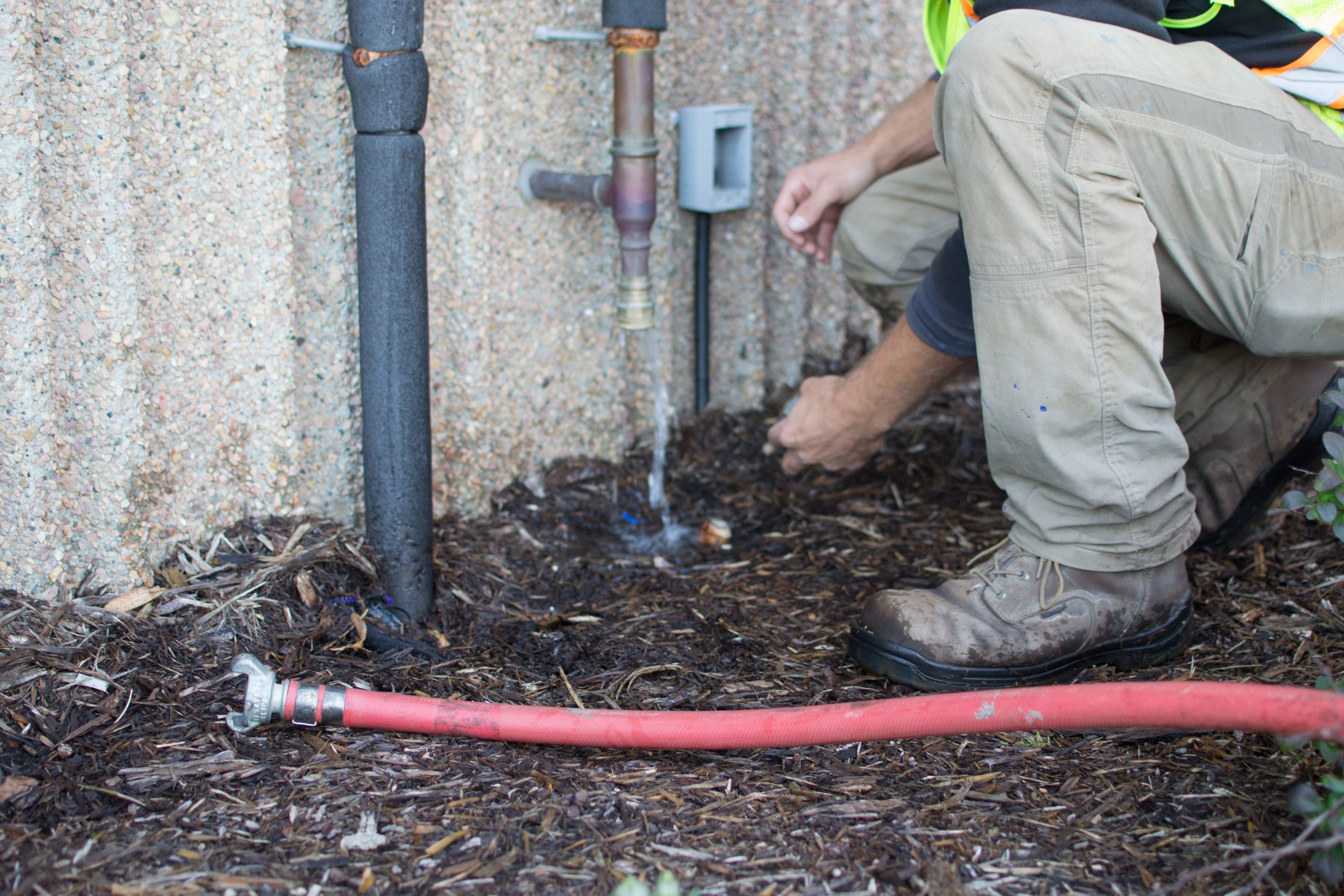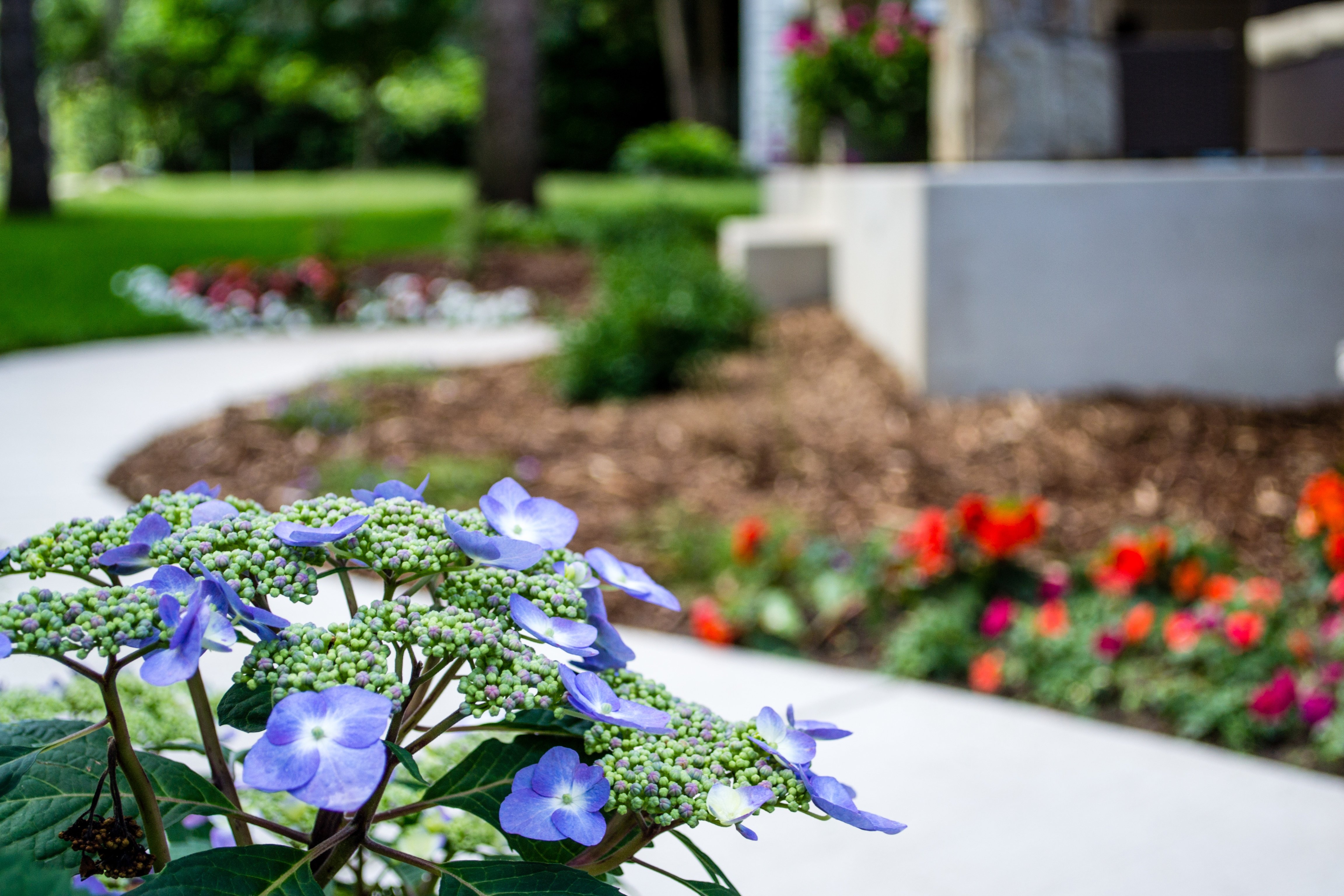Drip irrigation, also known as drip line irrigation is a form of irrigation that applies water slowly to the roots of plants, through a network of tubes. A popular choice for its efficiency, drip irrigation can conserve water and lower water bills opposed to traditional watering techniques. Drip irrigation is slightly buried beneath the ground and very discrete. If you are considering switching to an automatic irrigation system, or wondering "what type of irrigation system should I use?" read these frequently asked questions to determine if it is a good fit?
Q: How does a drip irrigation system compare to an above ground sprinkler?
A: Instead of spraying a planted area above ground, drip irrigation soaks the ground with tubes that are weaved around the leaf canopy of the plants. These narrow tubes have small holes in it to deliver water directly to the base of the plant by leaking water out slowly. Drip irrigation is best suited for landscape beds with lots of plants and shrubs rather than lawns. Drip lines can be paired with your lawn irrigation system or any other type of automatic irrigation; it simply functions as another zone in the larger system.

Q: What are the benefits of drip irrigation?
A: Drip line is a more water efficient irrigation system than above ground sprinklers. Rather than spraying water over a large area, drip lines soak the soil directly around the plants. No water is wasted through runoff, evaporation, or over spraying. This method maximizes the water used since it waters the root zone directly. Drip lines also emit water at a slower rate that allows the roots to absorb more water over a longer period of time. This helps reduce over watering that can lead to mold on the plants and roots.
Q: How much will I save on my water bill by having a drip line system?
A: Drip irrigation systems emit water at a slower rate than above ground sprinklers or garden hoses. Depending on the style and settings, drip emitters may apply water at 0.5 – 4 gallons per hour where a rotor style sprinkler can water between 1 – 6 gallons per minute. Each yard will require different amounts of water since the total amount of water used depends on the size, shade, and plant selection. But the slower application rate and higher efficiency of drip irrigation can reduce water usage by 50%. Why Your Lawn Has An Unquenchable Thirst For Water

Q: Is a drip line irrigation system difficult to install?
A: The installation process of drip irrigation is no more difficult than a rotor style system. The tubing is flexible and easy to work with, plus it doesn’t need to be buried like other irrigation lines. The drip lines should be installed after the plants have been put in the ground, so the tubing can be weaved between the plants at a proper distance. If plants are moved or rearranged, it isn’t too difficult to re-adjust the drip line.

Q: What are the maintenance requirements for drip irrigation?
A: Seasonal maintenance is required for any underground irrigation system. The system needs to be winterized before temperatures drop below freezing. Winterize Your Yard Before Winter. The water supply is turned off and air is blown through the lines to get all the water out of the system to prevent damage caused by freezing. The irrigation system also needs to be started up again in the Spring by turning the water back on. A professional irrigation company will often check the system in the spring to test and fix any issues. In between these two times of service, a homeowner can periodically check the system to make sure it is working by testing each zone to make sure the water is being dispersed properly.
Q: How will I know if the drip line is working?
A: Since drip line is slightly buried and it doesn’t spray above ground, it can be difficult to tell if it’s working. After the system has been turned on for several minutes, you should be able to see the areas in which the line has watered. You can look closely around the plants and see where the soil is damp. If the drip line is covered by mulch, it may be difficult to see the wet spots. If this is the case, simply dig away a small portion of the mulch and soil with your hand and feel the soil to see if it’s moist or not. This is also a good way to determine if the plants are getting enough water.


